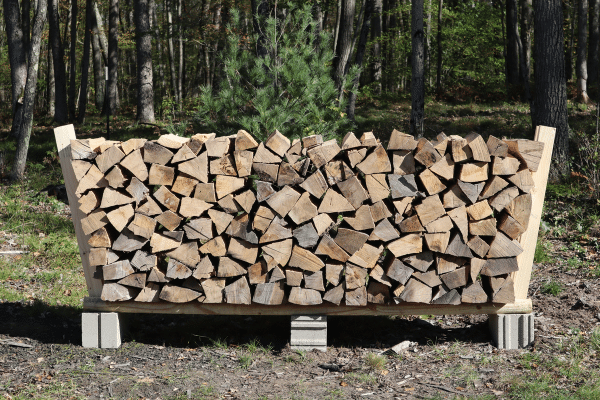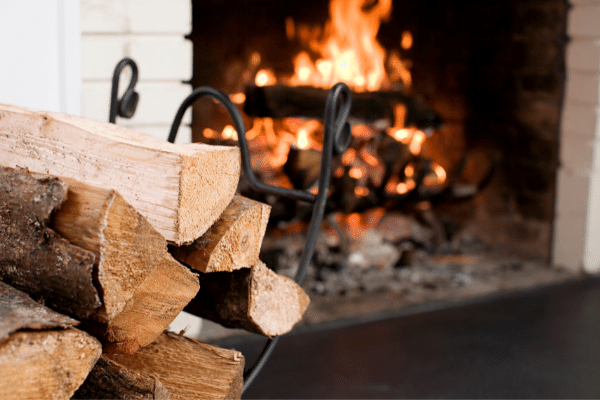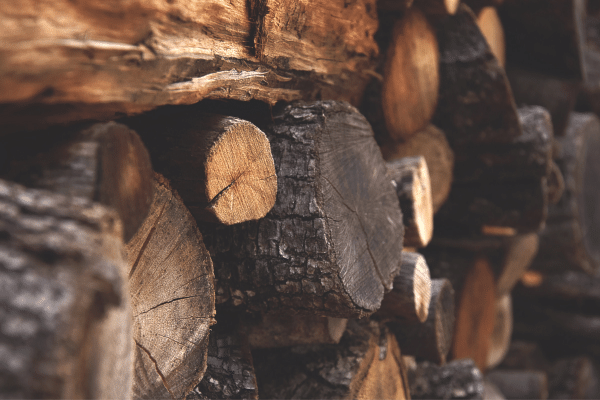- Home
- Storing Firewood
- White Oak Firewood
White Oak Firewood
This post may contain affiliate links so I earn a commission.
White oak firewood is one of the best firewood types you can choose.
Not only an amazing firewood choice, white oak has a handful of other important uses.
Read on to learn more about this tree - and why it’s valued in so many ways!
What Is White Oak?
Quercus alba is the scientific name given to white oak which is a preeminent tree found in eastern and central North America.
White oak can be found in Minnesota, southern Maine, Ontario, and also stretching to the northern tip of Florida.
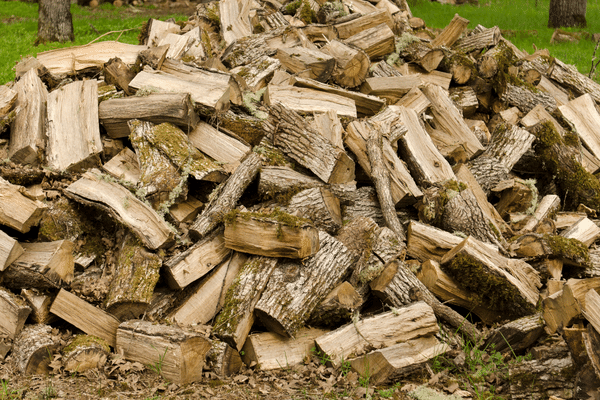
White oak is often called a large, imposing tree with a stocky trunk and horizontal limbs.
It is a deciduous hardwood reaching heights of up to 150 but more commonly averaging 80-100 feet.
White oaks’ stocky trunk can reach diameters of up to 48 inches in some cases, and have a canopy that can be up to 60 feet, with a horizontal limb structure that’s breathtaking to behold.
A very unique tree, white oak grows both male and female flowers.
This is uncommon among other tree species.
The acorns become the fruit of the fertilized female flower.
The flowers and acorns on white oak are usually on a four to six-year cycle, with little or no production of either flowers or acorns in "off" years.
It will often take a white oak up to 20 years to begin producing acorns, but when they start, they will come by the thousands.
White oak is a unique tree when it comes to its lumber as well.
It is considered to be one of the densest hardwoods.
It was once widely used in maritime applications, especially in shipbuilding.
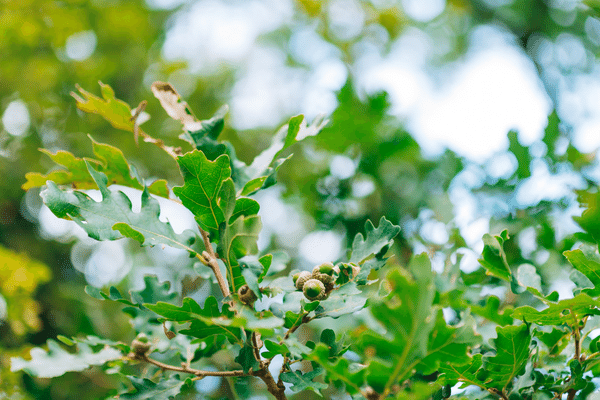
In fact, the famous USS Constitution, commissioned by George Washington in 1774, had a beautiful hull constructed of three layers of white oak.
White oak is a member of a broad family of oaks.
Also included as members of this family are bur, chinkapin, swamp white and post oaks.
All varieties categorized in this group have rounded lobes on the leaves and acorns, each of which mature in a single growing season.
Seasoning White Oak Firewood
As is the case with all hardwoods, especially those of denser composition, the more time you take to season firewood, the better it will burn.
White oak firewood can be considered dry after about six months but should really be seasoned at least a year and, if possible, two years.
Cutting your firewood in the winter after the sap has gone back to the roots will greatly reduce the moisture content as well, resulting in less time to season.
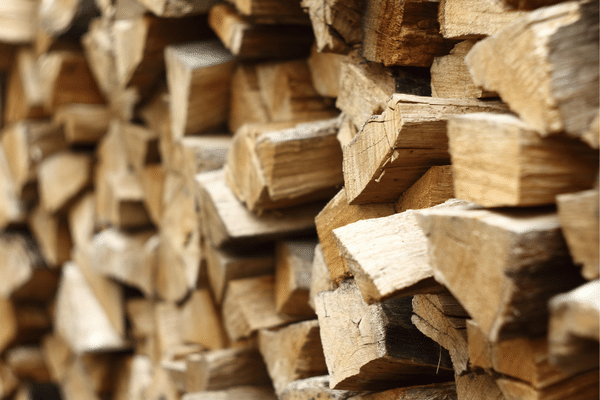
Properly seasoned wood will always have a darker color when drying and will tend to lose its bark as well when properly dried.
Moisture meters provide a failsafe method to determine moisture content.
Moisture readings should fall under 20% to be sure that the wood is completely dry.
If you don’t have access to a moisture meter, an “old-timer” way of testing dryness is to simply knock two blocks together end to end, which produces a ringing sound signifying dryness.
Other White Oak Characteristics For Firewood
One question lots of people have when considering white oak firewood is whether it will produce a mess when burned indoors or outside.
There should be no visible sap coming from a white oak.
The only sap is what carries the nutrients within the interior.
If there is any visible sap on white oak, it is typically due to a disease or an insect infestation.
An ideal wood for burning is a fireplace, white oak firewood produces virtually no smoke if properly dried.
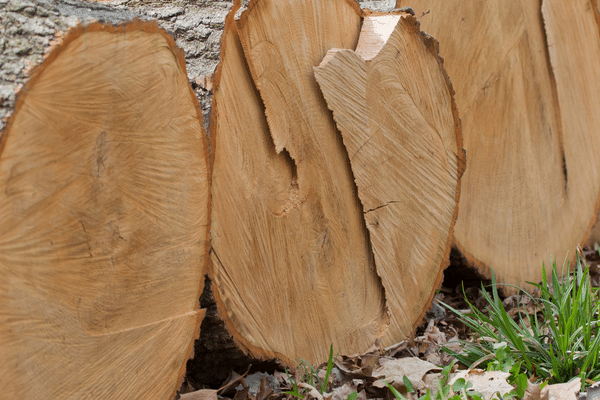
An added benefit to this tree is that, while burning, there are very few sparks if the wood is seasoned well.
Creosote is also minimal when burning well-seasoned white oak.
It is intensely hot burning wood, which is what leads to the lower production of creosote.
White oak firewood is also fairly easy to split.
Although it might not be as easy as ash firewood, white oak splits really well with a maul or splitting axe.
On occasion, there could be a piece where the grain is twisted or irregular, causing some chunks to be difficult to split, but this is not common.
White Oak vs Red Oak Firewood
Hands down, white oak is a leader in heat efficiency and output.
Putting out an amazing 30 million plus BTUs per cord, white oak is probably the best all-around choice if you have access to this type of firewood.
It is even thought that white oak surpasses its cousin, red oak, in heat output.
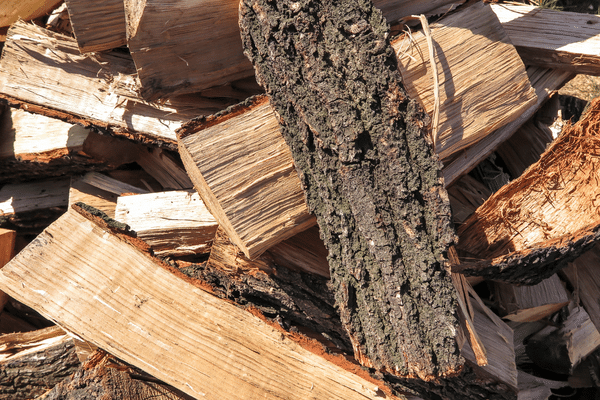 Red Oak Firewood
Red Oak FirewoodThat is due to the longevity of the hot coals.
Plus, unlike its unpleasant smelling cousin red oak, white oak tends to be much more pleasing to the nostrils!
Nicely seasoned white oak will emit the aroma of vanilla, which is obviously a fragrance that is enjoyed by a lot of people.
Oak is the predominate tree growing on my property.
While there's more red oak than white, I would choose to burn white oak any day over red.
The wood is a joy to split, it smells great and it tends to season faster than red oak.
Other Uses For White Oak
Known for its “cooperage” or water tightness, white oak was historically the leading lumber used to manufacture ships and watertight barrels.
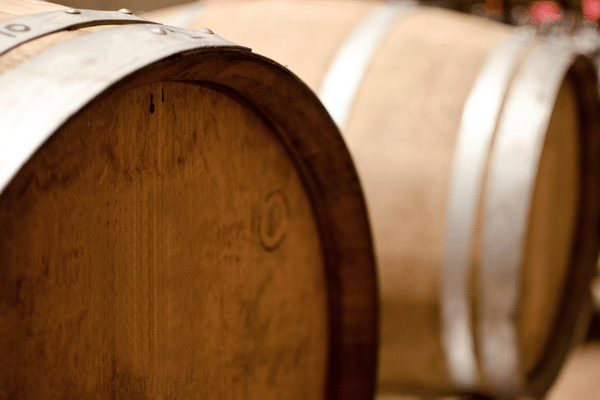
Lumber sawn from white oak tends to be straight-grained and easy to mill.
It is also easy to machine into trim, moldings, fine cabinetry, flooring, and furniture.
Finally, white oak bark has a powerful medicinal value.
It can be brewed into a tea, which can be used to combat conditions like cough, fever, arthritis, and the common cold.
Where To Buy White Oak Firewood
It is easy to find white oak firewood locally through various wood vendors.
Check your local listings and you should be able to find some nearby businesses that specialize in firewood sales, many of whom will offer white oak firewood for sale.
Online searches and good old-fashioned “word of mouth” may be helpful in finding sources of wood, too.
As you can see, white oak is an extremely versatile wood for lumber, particularly where durability and resistance to rot are important qualities.
It’s also a top-notch firewood.
White oak firewood is a true leader in heat efficiency and output, with its BTUs per cord far surpassing all other woods that are native to the United States.
